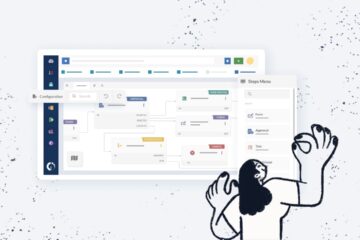In today’s fast-paced Information Technology landscape, organizations must be prepared for unexpected challenges. One critical aspect of this preparedness is having a robust rollback plan in place.
This article will explore what a rollback plan entails, its importance in Change Management and business continuity, and the key elements of a strong rollback strategy.
Let’s dive in.
What is a rollback plan?
A rollback plan is a structured approach to revert a system or application to a previous state in case of unforeseen issues during a change or update. Think of it as a safety net, ensuring that any modifications can be undone smoothly if complications arise.
Rollback Plans and Change Management
In Change Management, a rollback plan is essential. It aligns with the goal of minimizing disruptions during changes and ensures that any unexpected outcomes can be quickly addressed, facilitating a seamless transition.
Business Continuity and Rollback Plans
For organizations, the ability to adapt to change while maintaining continuous operations is crucial. Rollback plans not only support Change Management but also form a critical part of broader business continuity strategies. Being able to return to a stable state during crises is invaluable.
Why is a rollback plan vital?
A rollback plan is vital because it provides a structured approach to revert system changes or updates, ensuring business continuity and minimizing disruption by allowing for a swift restoration to a known stable state in the event of unforeseen issues or failures during implementation.
Here are the main benefits.
Ensuring operational continuity
Rollback plans play a pivotal role in maintaining operational continuity. In the dynamic IT environment, where system changes are inevitable, a reliable rollback strategy ensures minimal disruptions, keeping the business running smoothly.
Mitigating risks in Change Management
Change Management involves implementing IT system changes, which come with inherent risks. A well-designed rollback plan acts as a safety net, reducing the impact of failed changes, protecting data integrity, and preserving system functionality.
Components of an effective rollback plan
Developing an effective rollback plan requires careful consideration of various components:
- Backup Strategy: A strong rollback plan starts with a robust backup strategy. Regular backups of data and system configurations ensure a stable point to return to if necessary.
- Version Control: Implementing version control mechanisms is crucial for tracking changes and facilitating reverting to a specific version in case of issues.
- Testing Protocols: Thoroughly testing the rollback process is essential to ensure its practicality and reliability in real-world scenarios.
Examples of rollback plans in action
Imagine a scenario where a software update causes unexpected errors. Without a rollback plan, reverting to the previous version could be challenging, leading to extended downtimes and potential data loss.
However, with a well-executed plan, the organization can seamlessly roll back to the previous state, minimizing operational impact.
Here are three examples of successful rollback plans:
-
Software Update Rollback: If a software update causes system instability, the rollback plan allows for a smooth return to the previous software version, ensuring uninterrupted operations while addressing issues.
-
Configuration Change Rollback: In case of network disruptions from a configuration change, the rollback plan swiftly restores the previous settings, minimizing downtime and preserving network functionality.
-
Database Migration Rollback: During a database migration, the rollback plan reverts the database to its pre-migration state if issues arise, preventing data loss and maintaining application availability.
Conclusion
In conclusion, a well-designed rollback plan is essential for effective IT management. It safeguards against unforeseen challenges, aligns with Change Management principles, and contributes to overall business continuity. As the IT landscape evolves, organizations must prioritize robust rollback strategies to navigate complexities with precision.



